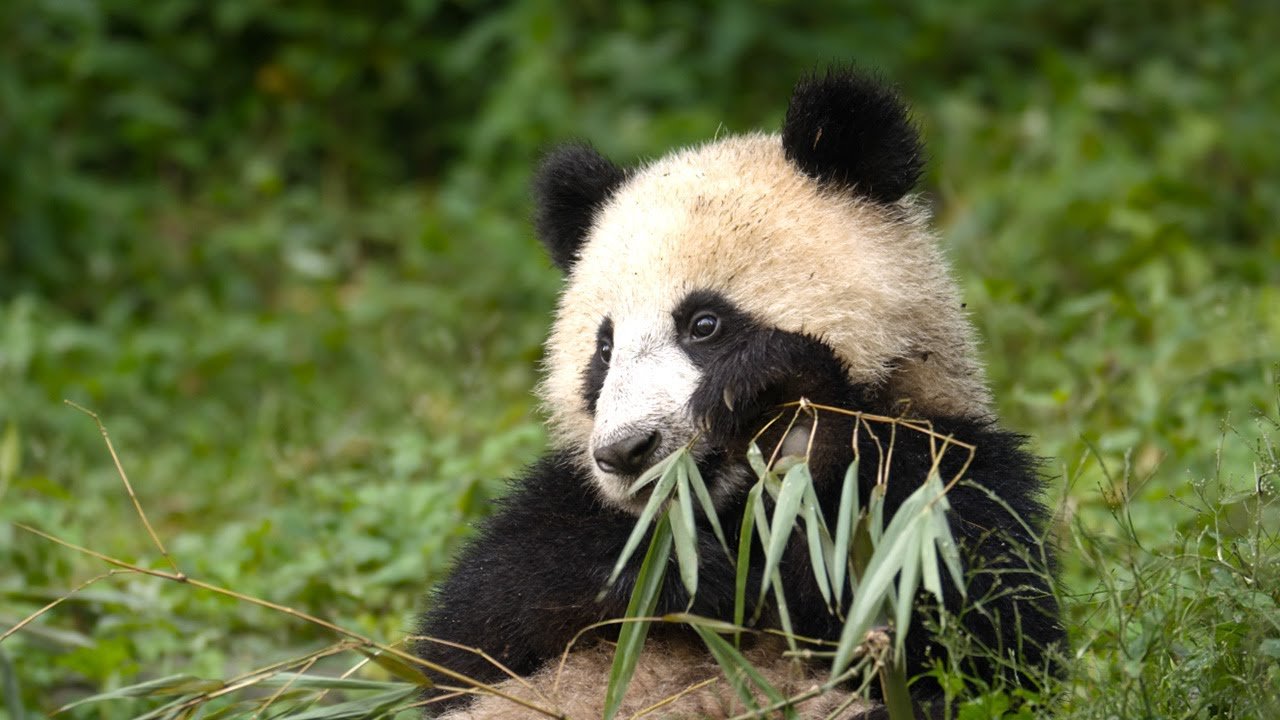Also on the same topic:
Discovering the Red Panda's Bamboo Diet
The red panda, scientifically known as Ailurus fulgens, primarily feeds on bamboo. Despite their classification as carnivores, red pandas have adapted to a diet that is almost exclusively herbivorous, with bamboo making up about 95% of their intake. This adaptation is particularly intriguing given their digestive system, which is more suited to a carnivorous diet.
Red pandas spend a significant portion of their day (up to 13 hours) foraging for and eating bamboo. They are particularly fond of the young, tender shoots and leaves, which are easier to digest. However, they also consume the tougher culms when other parts are less available, especially in winter.

The Fascinating Adaptations of the Red Panda
Red pandas have several adaptations that enable them to efficiently consume and digest bamboo. One of the most notable is the 'pseudo-thumb,' a modified wrist bone that helps them grasp bamboo stalks. This adaptation allows the red panda to handle bamboo with remarkable dexterity.
Additionally, red pandas have a specialized gut microbiome that helps them break down cellulose in bamboo, a task that their primarily carnivorous digestive system is not well-equipped to handle. This adaptation is crucial for extracting maximum nutrients from their bamboo diet.
A Closer Look at the Red Panda's Feeding Behavior
Feeding behavior in red pandas is marked by a blend of activity and rest. They are crepuscular, meaning they are most active during the dawn and dusk when they forage for food. During the day, they rest in the branches of trees to conserve energy, which is essential given the low nutritional value of bamboo.
Interestingly, red pandas also exhibit a taste for variety and will occasionally eat fruits, acorns, roots, and eggs. This varied diet helps supplement the nutritional deficiencies of bamboo and is particularly important during the breeding season when females need additional nutrients.

The Role of Bamboo in the Red Panda's Ecosystem
Bamboo plays a crucial role not only in the diet of the red panda but also in the broader ecosystem. Red pandas help regulate bamboo forests by selectively feeding on certain species, thus preventing any single species from becoming dominant. This behavior helps maintain biodiversity within their habitat.
Moreover, the red panda's feeding habits help disperse bamboo seeds, contributing to the health and regeneration of the forest. This ecological role is vital for the sustainability of their habitat, which is under threat from deforestation and fragmentation.
Conservation Challenges and Solutions for the Red Panda
The red panda faces numerous threats, primarily from habitat loss and fragmentation, which directly impact their food sources. Conservation efforts are focused on habitat preservation and restoration, anti-poaching measures, and community-based conservation programs that involve local populations in the protection of these charismatic animals.
Efforts are also being made to study and understand the genetic diversity of red pandas, which is crucial for effective conservation strategies. Protecting the red panda requires a comprehensive approach that addresses both the species' specific needs and the broader environmental challenges they face.
The red panda's diet is a remarkable example of adaptation and survival. Understanding and preserving this unique dietary habit is crucial not only for the survival of the red panda but also for the conservation of the rich biodiversity of their habitat.
If you want to know other articles similar to Unveiling the Red Panda's Fascinating Bamboo Diet you can visit the Red Panda category.

